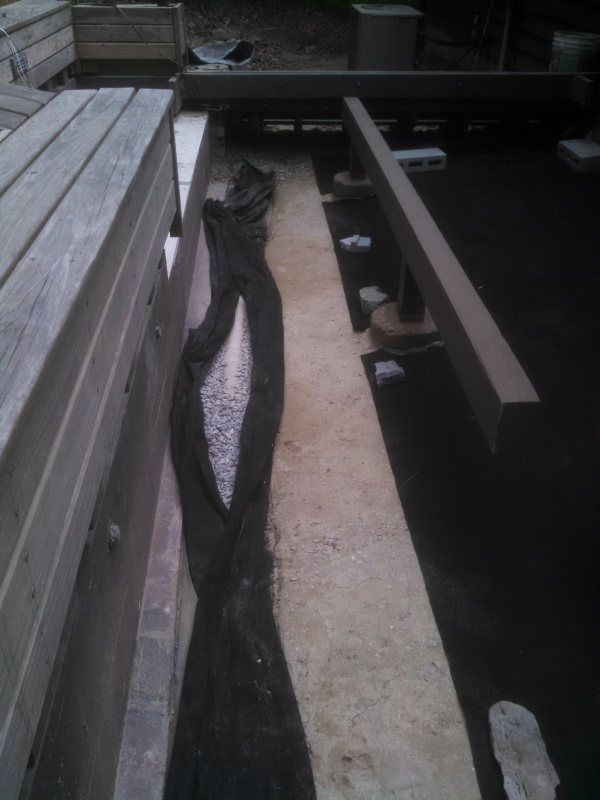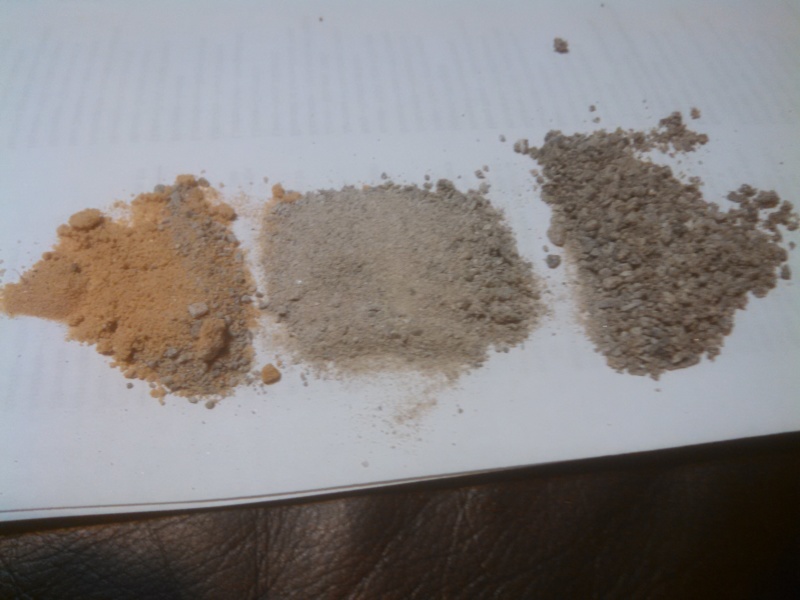The area under my deck (8'X50', disassembled) is sloped 8" over 8' away from the house and toward a drain (as pictured). I have a heavy plastic (30 mil) which will cover the area under the deck and terminate over the drain, so fines will not migrate into the drain or fabric. I have the drain set up with 4" PVC (with holes) surrounded by gravel and fabric, but before I rebuild the deck I thought I might change the drain aggregate to concrete sand and no fabric.
I have seen oldestguy say the following...
You can't beat using ASTM C-33 fine aggregation (concrete sand) as a filter and drainage medium and you can't do it wrong. Can't say the same for gravel and filter fabric....The beauty of the sand fill is it is a good filter, you need no fabric....Leaving the top of a sand filled trench open won't hurt anything, but the top will be plugged in time with dirt. Of course gravel backfill will fill up with dirt unless that is surrounded all sides with a filter fabric - means more work and more cost.
Thank you in advance for any input

I have seen oldestguy say the following...
You can't beat using ASTM C-33 fine aggregation (concrete sand) as a filter and drainage medium and you can't do it wrong. Can't say the same for gravel and filter fabric....The beauty of the sand fill is it is a good filter, you need no fabric....Leaving the top of a sand filled trench open won't hurt anything, but the top will be plugged in time with dirt. Of course gravel backfill will fill up with dirt unless that is surrounded all sides with a filter fabric - means more work and more cost.
Thank you in advance for any input


